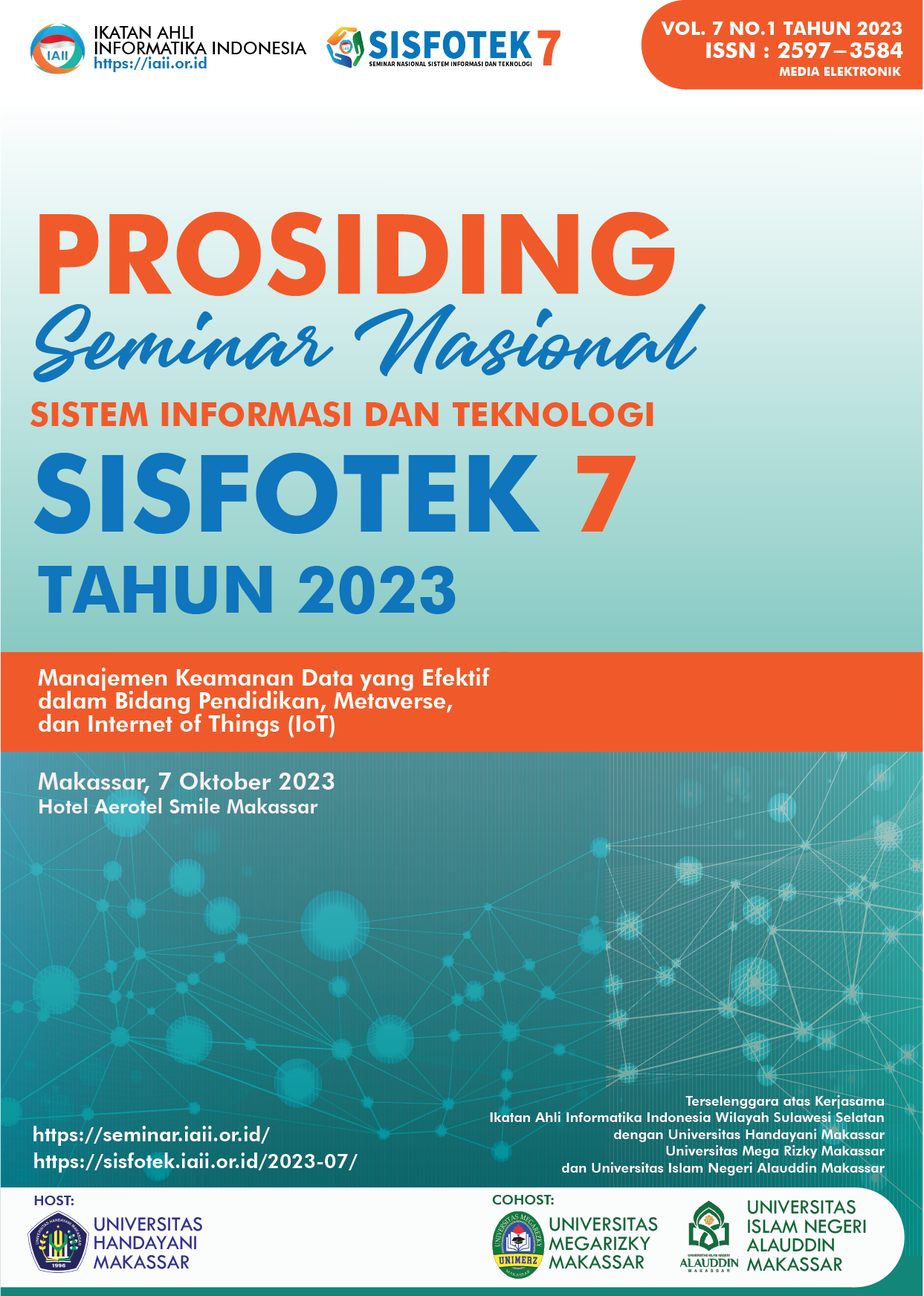Penerapan Metode K-Means Clustering Dalam Mengelompokkan Data Penjualan Obat pada Apotek M23
Keywords:
k-means, clustering, Davies Bouldin Index Method, drugAbstract
Planning for the need for the right medicines can make the procurement of medicines efficient and effective so that the medicines can be sufficiently available as needed and can be obtained when needed. At the current M23 Pharmacy, sometimes there is a shortage or overstock of medicines. To overcome these problems a data mining method is applied by analyzing drug use to produce information that can be used as drug inventory control and planning. The method used in this study is the K-Means method. The K-Means clustering method aims to group data that has the same characteristics into the same cluster and data that has different characteristics are grouped into other clusters. As for determining the best number of clusters using the Davies Bouldin Index (DBI) method. The results of this study determined that the best number of clusters was 2 clusters, the drug data grouping consisted of cluster 1 with low drug use consisting of 144 types of drugs and cluster 2 with high drug use consisting of 6 types of drugs.
References
N. A. O. Saputri and M. Elvirasari, “Penerapan Metode K-Means Clustering Untuk Menentukan Jumlah Penjualan Obat Yang Banyak Terjual Pada Apotek Murbay Sekayu,” Informanika J., vol. 7, no. 2, pp. 44–51, 2021.
M. W. Talakua, Z. A. Leleury, and A. W. Taluta, “Analisis Cluster Dengan Menggunakan Metode K-Means Untuk Pengelompokkan Kabupaten/Kota Di Provinsi Maluku Berdasarkan Indikator Indeks Pembangunan Manusia Tahun 2014,” BAREKENG J. Ilmu Mat. dan Terap., vol. 11, no. 2, pp. 119–128, 2017, doi: 10.30598/barekengvol11iss2pp119-128.
N. Mirantika, “Penerapan Algoritma K-Means Clustering Untuk Pengelompokan Penyebaran Covid-19 di Provinsi Jawa Barat,” Nuansa Inform., vol. 15, no. 2, pp. 92–98, 2021, doi: 10.25134/nuansa.v15i2.4321.
I. Virgo, S. Defit, and Y. Yuhandri, “Klasterisasi Tingkat Kehadiran Dosen Menggunakan Algoritma K-Means Clustering,” J. Sistim Inf. dan Teknol., vol. 2, pp. 23–28, 2020, doi: 10.37034/jsisfotek.v2i1.17.
D. Anggarwati, O. Nurdiawan, I. Ali, and D. A. Kurnia, “Penerapan Algoritma K-Means Dalam Prediksi Penjualan Karoseri,” J. Data Sci. Inform., vol. 1, no. 2, pp. 58–62, 2021.
G. Gustientiedina, M. H. Adiya, and Y. Desnelita, “Penerapan Algoritma K-Means Untuk Clustering Data Obat-Obatan,” J. Nas. Teknol. dan Sist. Inf., vol. 5, no. 1, pp. 17–24, 2019, doi: 10.25077/teknosi.v5i1.2019.17-24.
P. M. C. Abrianto, “Penerapan Metode K-Means Clustering Untuk Pengelompokkan Pasien Penyakit Liver,” JATI (Jurnal Mhs. Tek. Inform., vol. 2, no. 2, pp. 247–255, 2018.
Y. Sopyan, A. D. Lesmana, and C. Juliane, “Analisis Algoritma K-Means dan Davies Bouldin Index dalam Mencari Cluster Terbaik Kasus Perceraian di Kabupaten Kuningan,” Build. Informatics, Technol. Sci., vol. 4, no. 3, pp. 1464–1470, 2022, doi: 10.47065/bits.v4i3.2697.
D. Jollyta, S. Efendi, M. Zarlis, and H. Mawengkang, “Optimasi Cluster Pada Data Stunting: Teknik Evaluasi Cluster Sum of Square Error dan Davies Bouldin Index,” Pros. Semin. Nas. Ris. Inf. Sci., vol. 1, no. September, p. 918, 2019, doi: 10.30645/senaris.v1i0.100.
Widiarina, “Algoritma Cluster Dinamik Untuk Optimasi Cluster Pada Algoritma K-Means Dalam Pemetaan Nasabah Potensial Algoritma Cluster Dinamik Untuk Optimasi Cluster Pada Algoritma K-Means Dalam,” Tesis Magister Ilmu Komputer, Nusa Mandiri, vol. 1, no. 1, pp. 33–36, 2013.
Downloads
Published
How to Cite
Issue
Section
License
Copyright (c) 2023 Seminar Nasional Sistem Informasi dan Teknologi (SISFOTEK)

This work is licensed under a Creative Commons Attribution 4.0 International License.
http://creativecommons.org/licenses/by/4.0







